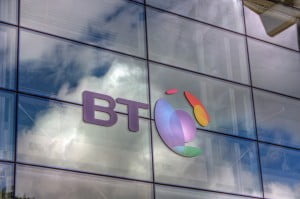

It is often said that the Internet of Things is all about data. Indeed, at its absolute heart, the whole ecosystem could even be reduced to four distinct layers, ones that are essentially applicable to any vertical.
First of all, you have the sensing layer: somehow (using sensors, Wi-Fi, beacons: whatever you can!) you have to collect the data in the first place, often in harsh environments. From there you need to transport the data on a connectivity layer. This could be mobile or fixed, Wi-Fi or something altogether more cutting edge.
Thirdly, you need to aggregate this data, to bring it together and allow it to be exchanged. Finally, there’s the crucial matter of analytics, where the raw data is transformed into something useful.
Operators such as BT sense the opportunities in this process – particularly in the first three stages. Some telcos may have arrived a little late to the IoT table, but there’s no question that – with their copious background developing vast, secure infrastructures – they enjoy some fundamental advantages.
“I see IoT as a great opportunity,” says Hubertus von Roenne, VP Global Industry Practices, BT Global Services. “The more the world is connected, the more you have to rely on a robust infrastructure, whether it’s connectivity or data centres, and the more you have to rely on secure and reliable environment. That’s our home turf. We are already active on all four layers, not only through our global network infrastructure, but also via our secure cloud computing capabilities and a ‘Cloud of Clouds’ technology vision that enables real time data crunching and strategic collaboration across very many platforms.”
An example of how BT is positioning itself can be seen in Milton Keynes, a flagship ‘smart city’ in the UK, with large public and private sector investment. BT is one of over a dozen companies from various industries testing out different use cases for a smarter, more connected city.
“In Milton Keynes we are the technology partner that’s collecting the data. We’ve created a data hub where we allow the information to be passed on, but also make it compatible and usable. The governance body of this Milton Keynes project decided very early to make it open source, open data, and allow small companies or individuals to play around with the data and turn it into applications. Our role is not necessarily to go onto the application layer – we leave that to others – our role is to allow the collection and transmission of data, and we help turn data into usable information.”
One use case BT is involved in is smart parking – figuring out how to help traffic management, reduce carbon footprint, and help the council to reduce costs and better plan for parking availability. “Lots of ideas which can evolve as you collect the data, and that’s BT’s role.”
Another good example of how BT can adapt its offerings to different verticals is its work in telecare and telehealth, where the telco currently partners with the NHS, providing the equipment, monitoring system, and certain administrative and operational units, leaving the medical part to the medical professionals.
While BT’s established UK infrastructure makes it well positioned to assume these kinds of roles in developing smarter cities and healthcare, in other, more commercial areas there are no place-specific constraints.
“Typically our core customer base for global services are the large multinational players,” says von Roenne, “and these operate around the world. We are bringing our network and cloud integration capabilities right down to the manufacturing lines or the coal face of our multinational customers. Just a few weeks ago, we announced a partnership with Rajant Corporation, who specialise in wireless mesh deployments, to enable organisations to connect and gather data from thousands of devices such as sensors, autonomous vehicles, industrial machinery, high-definition cameras and others.”
Indeed, there are countless areas where data can be profitably collated and exploited, and next month von Roenne will be attending Internet of Things World Europe in Berlin, where he will be looking to discover new businesses and business opportunities. “I think there is already a lot of low hanging fruit out there if we just do some clever thinking about using what’s out there,” he says, adding that, often, the area in which the data could really be useful is not necessarily the same as the one it’s being collected in.
The capacity to take a bird’s eye view, bringing together different sectors of the economy for everyone’s mutual benefit, is another advantage BT will point to as it positions itself for the Internet of Things.
[“Source- businesscloudnews”]

